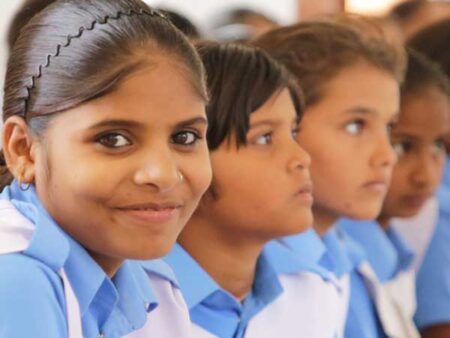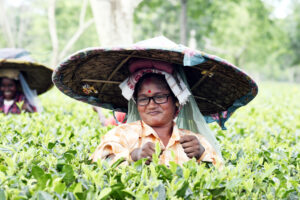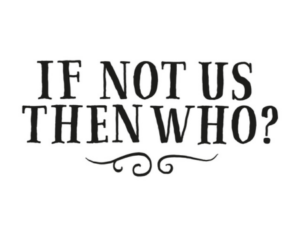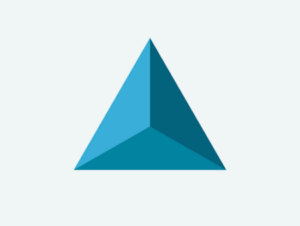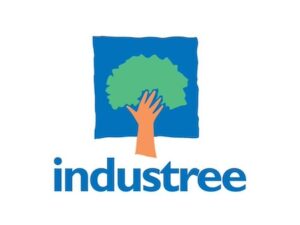Educate Girls has helped more than 1 million girls in India enroll or re-enroll in school. Their work in girls education includes connecting girls with learning camps, exam preparation, local mentorship, and better employment opportunities.
Shwetha Kamath and Geetika Tondon-Higgins of Educate Girls spoke with Priyanka Shankar on February 14, 2023. Click here to read the full conversation with insights highlighted.
Priyanka Shankar: Could you introduce yourselves based on how you’d like everyone to know you and the work you do.
Geetika Tondon-Higgins: I’m Geetika. I’ve been part of Educate Girls for almost two years. I lead Project Pragati for Educate Girls. Prior to joining Educate Girls, I was working with another organization called Unlimited India, which was an accelerator and incubator for NGOs. I’ve been in the education space in the NGO world for almost six years and before that I was in education management.
Shwetha Kamath: I’m Shwetha Kamath, I head communications at Educate Girls. I’ve been in the sector for 9 years now. Before that, I was in the corporate world. I’m really happy to talk to you about Project Pragati.
Priyanka Shankar: Could tell me a little bit about the exact problem you are addressing through Project Pragati and Educate Girls. How did the organization start, and was there an inspiration to address one specific sector in the education sector?
Geetika Tondon-Higgins: Educate Girls started its work in the year 2007. The idea was to link girls who have been out of school, who have never been enrolled in school with mainstream schools in India. In India we have what’s called the Right to Education Act and this requires kids under the age of 14 to be enrolled in school. So completing education till eighth grade is mandatory.
However, the problem that we see is that in many geographies in India, due to various reasons, whether it’s patriarchy, poverty, policy, girls usually get left behind. So if there are kids in the family, it’s the boys who get enrolled in school and the girls then help at home or take the backseat when it comes to education. And that was the mission of Educate Girls, to ensure that there is no gender disparity in schools, in the number of girls who are enrolled in schools. The program started in Rajasthan, in a district called Pali. And slowly over the last 15 years it’s expanded to more than 40 districts across four states. It has been a long journey.
Shwetha Kamath: We’ve mobilized 1.2 million girls for enrolment in school. Then overall it’s 1.7 million in terms of improved learning outcomes for both boys and girls.
Geetika Tondon-Higgins: That’s how many girls have been enrolled in schools and Pragati takes that journey forward. Like I said, the Right to Education Act covers education to eighth grade. But for somebody to be eligible for even an entry level job to develop certain kinds of skills that make you employable, you need to at least have a 10th grade certificate. And so that’s where we felt that there was a need to push the envelope a little bit above the eighth grade certification. And that’s what Pragati does. We identify girls who after Std 8, have become disconnected with education and now are at an age where they cannot be mainstreamed into schools. So we only work with girls who cannot go back into school to continue their education. We connect them with what is known as the Open School system in India.
We identify girls who have become disconnected from education before they could complete the secondary level education and get them registered with open schools. Then we conduct learning camps for them, where they prepare for their exams so that they can then sit for exams which will enable them to get their 10th grade credentials. Then we continue working with them to link them with better opportunities. So whether it’s to continue education or to get connected with an employment activity or get into vocational training, which would make them more employable, enhance their skills and would ensure financial inclusion for these girls. So that’s what Pragati does.
Priyanka Shankar: What makes your specific approach distinctive?
Geetika Tondon-Higgins: What makes our program different? Obviously there are other organizations who are working in the second chance program space. There are organizations that optimize the open school opportunity. But what we have realized is that the programs haven’t been able to scale as large as the problem is because of the model that has been developed. [One organization] has a residential program for three months where the learners can actually go and stay there, but what we have seen is the challenge of girls actually being able to even leave the house. I mean here we are talking about a segment where girls find it difficult to even step out of the house to attend school for a couple of hours.
Our entire design approach started with identifying the challenges that the learners would face, which made them get disconnected from education in the first place. The biggest reasons that we found were access. The girls are not able to reach the schools or reach the institutes where they could continue their education. If there is a primary level school in every village, then a middle level school is in every four or five villages, and high schools become even [more] scarce. So a girl is required to probably travel 15, 20 kilometers to even reach a school. Our solution was to bring the solution to the village itself, to their doorstep. We felt that creating camps where girls from a village could actually enroll and get the handholding and the support that they needed to prepare for their exam might be a solution. The other problem they were facing was financial. Up till eighth grade education is free, so it gets covered by the government, but as soon as eighth grade completes even to study in ninth grade, even in government schools, this nominal fee actually becomes a factor and a lot of the girls cannot continue education.
We work with open schools to ensure that there are some policies in place which take this into account. Right now we are working very largely with Rajasthan State Open School and what they have done is they have waived the fee completely for girls for open school. So while boys have to pay a nominal amount of some 1700 to 1800 rupees, for girls it’s completely free. Our approach to creating the solution has been very targeted [to the] specific challenges that the girls might face which might exclude them from optimizing this opportunity and then we have built a solution around that.
The other thing that we realized was that the biggest advocate for the girls during this entire journey would actually be someone from within their community. So when we talk about delivering our camps, we started enrolling somebody from the local community to be what we call a mentor or “Prerak”. They are the people who anchor these camps and have information and knowledge about girls who have dropped out of schools, and what particular challenges they might be facing. They have a connection with the families so they would be able to speak with the families and convince them that the girls should be part of this program and everything. Having that local mentor is also one of the USP’s of the Pragati program. So these are some of the reasons why we feel that the solution is actually tailored to the problems that the girls face.
Priyanka Shankar: How do you measure your impact or success? What would you say is successful in this?
Geetika Tondon-Higgins: The biggest successes [have been] reaching that last girl who is not even aware that there is an opportunity like open school that exists. We are talking about girls for whom education as a chapter is over. Once they’ve dropped out of school and they’ve dropped out for so many years that for their families, and the girls themselves, feel there is no way for me to restart my education. That’s why we follow this approach that basically creates awareness that no, it’s not chapter over for you, this is how you can start your journey again and this is how we can support you and how our entire team can support you in this. So I think that is one big success. We do have targets obviously, and there is a certain number of goals we want to reach and to put things in context, there are studies which have shown that there are about 66 million 14 to 25 year old girls and women in India who are permanently at-risk of never completing their secondary education.
The problem is huge. And our success would be to reach as many girls as possible from this age group and class that has been excluded and then get them 10th grade certification. And it doesn’t stop there. I mentioned that the goal is also to link them with further education, employment and training opportunities.
Another thing that we would consider as success is that girls who have been part of this program are actually linked to gainful employment or they’ve used their 10th grade certification. That is another thing that we would think is a mark of success. We want to mobilize communities, we want to enable communities so that they also become more cognizant of these things and at some point then EG [Educate Girls] will not be required, Pragati will not be required to tell them that what this girl needs to be studying in some formal manner and that there is this opportunity. We want the communities themselves to become aware and encourage their girls, their daughter-in-laws, sisters to keep studying. That would be another success.
Priyanka Shankar: I’m really curious to find out what are the conversations you have with these girls or their parents to get them to study again? I’m sure it’s really challenging.
Geetika Tondon-Higgins: Yes it is. I will tell you a story. On one of my visits I met with two sisters [who were a] very similar age, one was about 18, one was about 19 and a half. Both of them had dropped out of school I think after eighth grade because their father had just passed and they didn’t have the financial support. So they needed to start earning money. And what happened was that obviously for them it was a closed chapter now they’ve been disconnected from education for more than five years. They were working and when we went into that village we thought, let’s see if we can mobilize enough people to set up a camp. Their reaction and the mother’s reaction was also that we don’t have time for this because we need to earn a living.
Our approach was to establish to them how completing their 10th grade would change the trajectory of their work and the financial implications that would happen because of that. And it’s quite touching, but what happened was that the girls asked if it was possible to enroll in the camp and come on alternate days so that one day I’ll go to work and my sister will come to the camp and the second day they’ll flip.
Our concern was that then, in the time that they would be giving in the camp, would it be possible for them to actually get enough support that they could pass the 10th grade exam? Here is where the Preraks stepped in because this is why I was talking about the need for community based Preraks. The Preraks said, I will school the other one. Whoever has not attended the camp today, I will ensure that I have a session with that girl and actually give them the inputs on the site because the fact is their reality is such that they do need to work. They can’t just stop working for four months and be part of the camp.
This was a solution that we gave them and the mother thought about it and she felt that okay, if this is something that can be worked around. Sometimes I think we see that the parents do want the kids to study, but they do not have the means to actually let their kids optimize that opportunity. There was another story where this girl had dropped out of school for a very long time, I think eight years. She had this zeal to complete 10th grade, although she never knew how to do that. When we went into the village she said her father was an alcoholic and he abused her mother and finally he died, he passed away.
By then the girl had dropped out of school and she was very adamant that I want to complete this because I want to grow up, I want to become a police officer and then I want to help women who get abused. There was such a huge [motivation] in her life to do this because it will definitely improve her life, but also to try and create systems so that more girls don’t have to go through this journey and more mothers don’t have to go through this journey that her mother had. Sometimes, it’s their motivation itself, we just need to present them with an opportunity. But then there are times when convincing the families becomes a huge thing. Especially during the pandemic, we saw high incidences of early marriage in the communities where we work.
And what happens is that, if there are three or four sisters in the family, then the family thinks okay, let’s get them all married together so that we have to spend only once. And so the oldest might be 18 and the youngest actually might be 11 years old, but all four sisters get married off to four guys in the same ceremony. We saw many such cases and the conversation was that we can’t send her to school now she’s married, she might be 11, but she’s married and unless her in-laws agree she cannot go to school anymore. And so one would have to then speak with the in-laws and convince them. I think what works most is the opportunities that would open up for the girls once they finish their 10th grade certification, what is the potential for their growth and if there are any tangible outcomes of that. They need to feel that there are opportunities that are present in our ecosystem which our daughter will be able to optimize as soon as she has a 10th grade certification.
That itself becomes a big reason. Girls can apply for loans. So there are many opportunities that open up and I think that is what is most attractive. Also for a lot of parents, this conversation of we will be building their life skills, we will be building their critical thinking, problem solving skills, it works both ways.
Priyanka Shankar: Are there any personal lessons you all have learned in this process? What can other countries learn from this? If you had lessons to share, what would those be?
Geetika Tondon-Higgins: One of my earliest learnings through these camps has been why is it so important to mobilize communities as well, and parents and families. It’s not just about the girls because what we have seen is sometimes there is backlash from the community. Suddenly girls who didn’t have a voice, now they have started taking decisions, they’ve started taking a stand that no, I don’t want to get married now I want to complete my education. So backlash does become a very real problem. It was very important that we preempt that and when we are engaging with the community and the families, they are also being trained or oriented, they’re being made aware that this is how the girls will get empowered. They have some understanding of that.
When they see signs of that happening in the girls, they react in a more healthy manner rather than clamping down even harder. That definitely is one thing to keep in mind. But in terms of what we feel that other geographies or other countries could learn from this is that one, I think all parents have the best interest of their kid in heart. They just might not know what might be best for the child. They might feel that if my kid can actually earn a living that’s great. Even at 14 or 15, if the girl is able to find a job and actually start earning money, they feel that their child has become financially independent and so they’ll be able to fend for themselves.
A lot of the parents might be coming from that mentality, but then it is up to the organizations to actually train them that while in the short term this might look like a good benefit, in the long term this will curtail the growth of the child and how about them realizing their true potential and whatever they can do.
Financial independence is important, but education and strengthening the foundation and skills on which you can actually continue your growth is also important. I think some of the great findings that we have had are the village-based [findings]. Why is it important to actually find somebody to anchor such a program who is village based, who’s local from the community? They can speak the language, they can relate to the challenges and all that. That’s something that has worked for us. Girls who themselves have been through this program become the best role models so they can really mobilize other girls, they’ll drag their friends and other girls that they know into the program if they feel that they’re really gaining something out of it. That becomes a good way to even mobilize girls.
Priyanka Shankar: You have the challenge of convincing the girls and the families and I wondered are there challenges as an organization to then raise funds for their education or also approach schools or the government bodies? Is there a reason why it’s not government or private schools or are there challenges there?
Geetika Tondon-Higgins: Open schools are government schools, but they are a parallel system that the government has made. Every state in India has their state code, which are mainstream schools where there’s a certain curriculum that’s followed and kids who are enrolled in schools undergo that. And then the states have also created what is called an open school, where learners who cannot actually be enrolled in school and continue their education have this option of registering. You study yourself and then you just go for an exam, you’ve registered for an exam and then you crack the exam. However, the awareness that this is an option available is not very high. So just to put some numbers into perspective, there’s probably around 1 or 1.1 million children in India who go through open schools in the entire country.
This might be a minuscule percentage of how many learners can actually be optimizing this. The awareness about this is pretty low. Second, these require you to study on your own. Not everyone is able to do that, to be able to even find time to study or be in a position to actually be able to use this opportunity. I think that the entire awareness and discourse around open school itself needs to be strengthened. The other is that there are a lot of misconceptions about open school, that even if they get their certification through that it might not be at par with the regular state board grade. These misconceptions also need to be dealt with. Somebody who has completed the 10th grade through open school, if they’re in the right age bracket, they can actually get mainstreamed in 11th grade.
Of course it depends from state to state. There are some states who are very active with their open school. We work with the government, because Educate Girls has always aligned itself with the work that the government is doing in the state, and we help them support it in enhancing their numbers. We have good support from Rajasthan State Open School where we are currently functioning and in the coming years we have to expand to new geographies.
Priyanka Shankar: How do you see your organization or this project advancing? Is there going to be more partnerships or maybe make it more tech savvy education of some sort or what are the future plans?
Geetika Tondon-Higgins: So all of those that you said. A program like this requires deep work at the ground level, at the community level. One of the strategies that we are working on is tying up with NGOs who will be our implementation partners. In the new geographies where we want to go, we are identifying mission-aligned NGO partners and who either have worked in education or have worked with adolescent girls who have access to a pool of field level workers from the community who could become our pre-reqs. Now we are looking at tying up with them and then having them implement programs in their geographies where of course Educate Girls will drive the entire performance management. We will train our implementation partners and we will ensure that so there’s certain qualitative outcomes and everything that we want.
Those benchmarks will be set and then we will train the implementation partners to scale this program in their geographies. That is definitely one of the ways. Technology of course, EdTech at the state level was definitely one of the bigger pathways for scale. Because of the scale that we are looking at expanding Pragati to, we would like to ensure a certain amount of standardization. Whether it’s in terms of content that is getting delivered, certain practices that are followed everywhere, how are we monitoring the performance of each camp? How are we actually measuring the health of each camp? Do we have visibility on the outcomes that we want to achieve? Technology will definitely play a huge part there. And we have tied up with technology partners who are helping us think this entire design through so that this can actually work even in geographies where not everyone has access to technology.
Shwetha Kamath: Essentially it’s three-pronged between the learning camps, the Preraks, the technology and the partners. It’s looked at as simultaneous or multi-pronged.
Priyanka Shankar: Is there anything else you’d like to add that I haven’t asked you or touched upon?
Shwetha Kamath: I think a couple of things. The pandemic has really pushed us back many years in terms of education. Patriarchy, poverty, policy and then the pandemic have pushed adolescent girls to exclusion. One of our studies shows that adolescent girls have really borne the brunt of the pandemic, especially from an education point of view. Amongst the many other harmful impacts that it’s had on us in terms of adolescent education. The other bit, which Geetika also mentioned in her story is about building the aspiration in the girl itself.
It’s a challenge because they’ve lost it over the time. When we say eight years she’s been away from school, then she doesn’t even think of what is [possible]. Very rarely can they think that I still want to be a police officer and I’ll still get to education. Most of them are married off like she mentioned and they’ve either gone through something, I mean they’ve had stories of domestic abuses, child marriage, all of those. And they have children themselves. They already at young ages have children and so they want a better life for their children, but they don’t know what and how and why. So building aspiration [in the girls] is the first step in that. I think the counseling that Geetika and her team does starts with that.
Priyanka Shankar: Are you also reaching out to boys, because there have been reports recently that a lot of boys drop out of school and of course talking about girls and boys in most of these communities there are also children who are figuring out their gender or their intersex and how does education work with them?
Geetika Tondon-Higgins: Yes, I’ll speak about both programs. There are girls who we identify and get them enrolled with schools, but then there is also work that is being done on the learning levels of kids who were once enrolled in schools. The work also has to be done to retain them in school. And one of the biggest reasons why a child might drop out again is because they feel they cannot cope with the level at which instruction is being given in the school.
As part of the core program we also conduct learning camps, which are called GKP camps and boys are part of them in GKP’s, Gyan ka pitara. So basically boys are also part of these camps. In Pragati, there are a few important points to understand here. We are talking about girls who have been excluded for a while and we are also talking about adolescent girls from geographies where families and communities don’t like it when their young girls interact or are in the same space as boys or men that are not from within the family itself.
This was a very conscious decision that we had to make. While we are doing all of this for girls, there is always this parallel conversation happening that then boys will get left behind. We found a middle way where girls only get enrolled for our camps because this is a safe space for them. For them it’s important to know that they can be themselves here, there’s no one watching them, keeping an eye on them. We want to keep that sacrosanct for us. But what we have also enabled our Preraks to do, and we train them, that whatever skills you are learning, whatever training you’re giving to girls, you can mentor boys outside the camp and enable them to do that as well. So there might be boys in the village who have also dropped out of school.
The Preraks can actually mentor them [and show them] where to go to get registered. And they can train the boys as well. They can even get paid for training those boys from the boys, but that has to be kept outside the camp. We have made that distinction, but the Preraks can advise the boys. In fact, this can also become a parallel means for the Preraks to earn more money. They do advise the boys also to continue their education and actually help them with the entire open school process. When we are talking about technology, obviously whatever gets created can be optimized by anyone because that does not encroach into the safe space for the girls. So that solution will be built for everyone.
Click here to read the full conversation with insights highlighted.
Priyanka Shankar is an independent journalist currently based in Brussels. She mainly covers stories about human rights, migration and Europe’s relations with Asia. Outside a newsroom you can find her rambling along mountains or scuba diving.
* This interview has been edited and condensed.
Learn about other social change organizations working on girls education.

